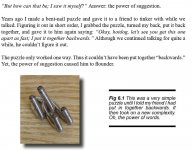Hey all,
Something I have been curious about since I started reading up on Bino specs is the subject of ED Glass.
Now I don't know all the specs, coatings and technical jargon associated with this glass, but I would still like to know more about it. I know that all of the "Alpha Binos" list in their specs as having ED Glass. What I'd like to know is whether all of these ED Glass lenses and prisms are created equal. Is the ED Glass in the ZEISS binos the same as the ED glass in a set of Swaro's or Tract Binos or the many others that are said to have ED Glass in them?
I'd love to be able to look thru a set that has the best ED glass and compare them to my Pentax DCF HRII 10x42. I'm pretty sure I have never had the pleasure to use a set of binos with ED glass in them. I know I'd sure like to try a set and just see how they maintain their lofty platforms that they have attained.
Can anyone explain this to me and hopefully helping me to understand why these binos are so expensive and what goes into making a set of these ED Glass Binos.
Help me "see" what is present in these binos that enthusiasts are willing to shell out a lot of money to get the very best money can buy.
In NO WAY am I slamming these sets of ALPHA binos or complaining on their prices. The best comes with a price tag. I'm happy that there are people that have attained a level of success and love their hobby to such an extent that they will buy the best gear that they can possibly get.
Please explain ED glass from these various companies please.
Have a good week.
MUHerd
Something I have been curious about since I started reading up on Bino specs is the subject of ED Glass.
Now I don't know all the specs, coatings and technical jargon associated with this glass, but I would still like to know more about it. I know that all of the "Alpha Binos" list in their specs as having ED Glass. What I'd like to know is whether all of these ED Glass lenses and prisms are created equal. Is the ED Glass in the ZEISS binos the same as the ED glass in a set of Swaro's or Tract Binos or the many others that are said to have ED Glass in them?
I'd love to be able to look thru a set that has the best ED glass and compare them to my Pentax DCF HRII 10x42. I'm pretty sure I have never had the pleasure to use a set of binos with ED glass in them. I know I'd sure like to try a set and just see how they maintain their lofty platforms that they have attained.
Can anyone explain this to me and hopefully helping me to understand why these binos are so expensive and what goes into making a set of these ED Glass Binos.
Help me "see" what is present in these binos that enthusiasts are willing to shell out a lot of money to get the very best money can buy.
In NO WAY am I slamming these sets of ALPHA binos or complaining on their prices. The best comes with a price tag. I'm happy that there are people that have attained a level of success and love their hobby to such an extent that they will buy the best gear that they can possibly get.
Please explain ED glass from these various companies please.
Have a good week.
MUHerd





